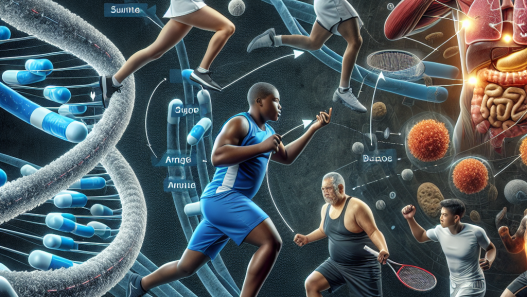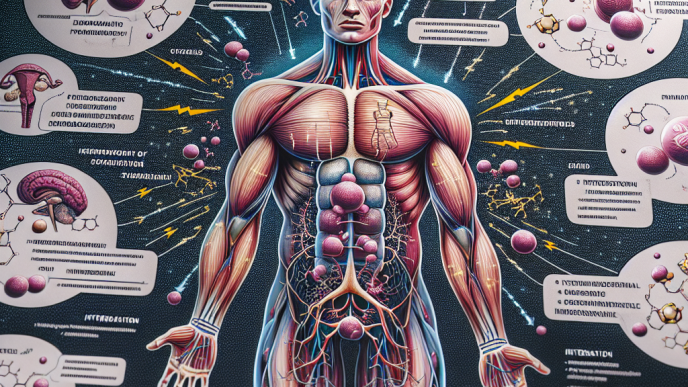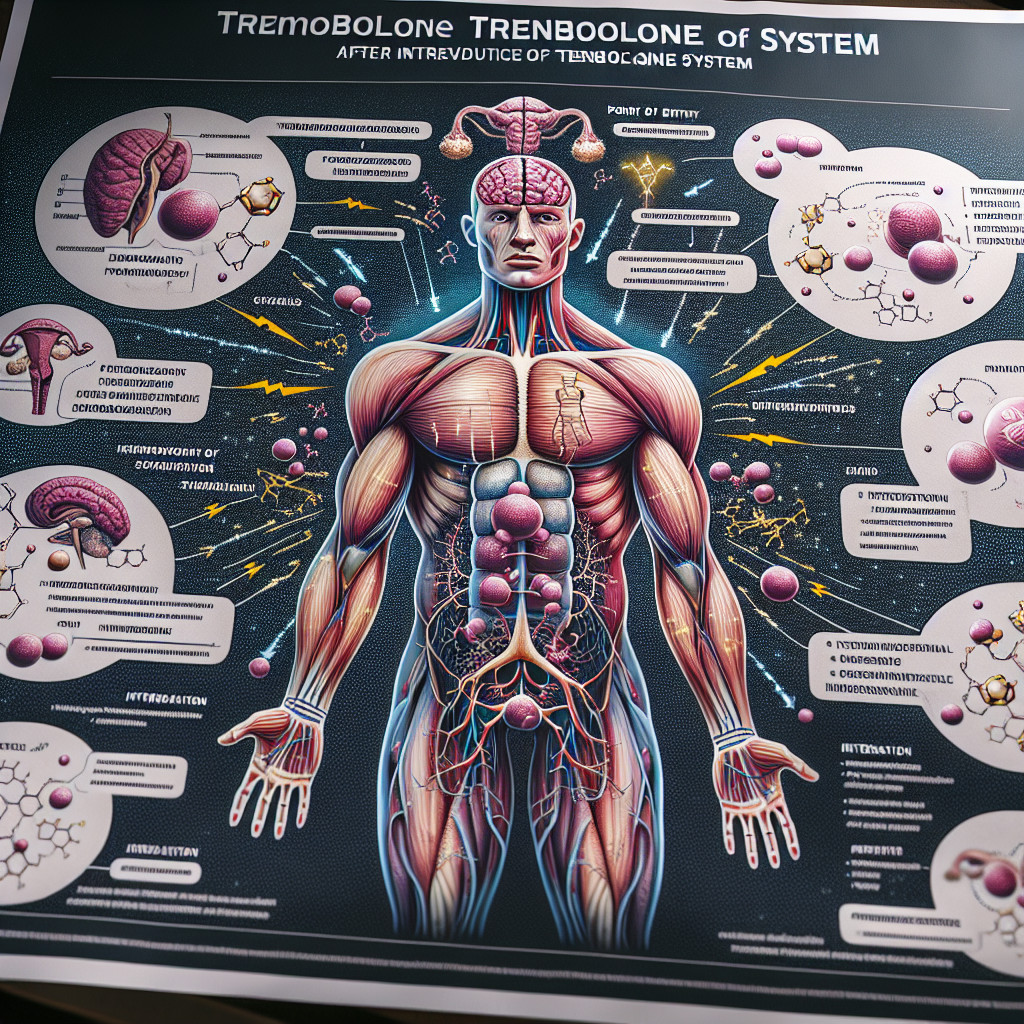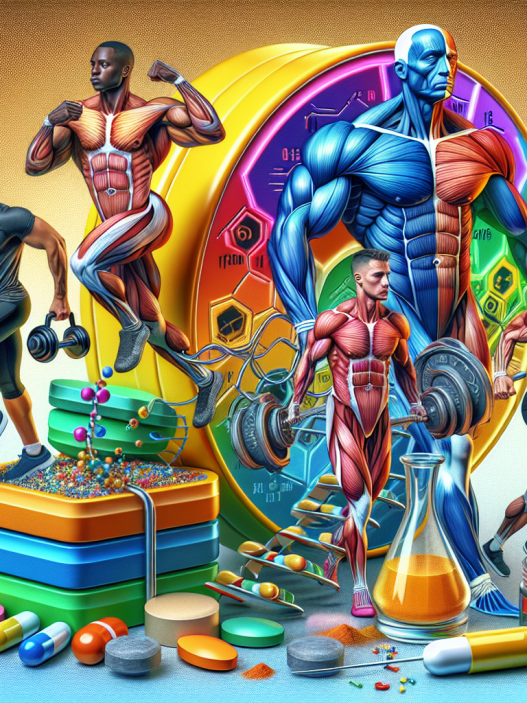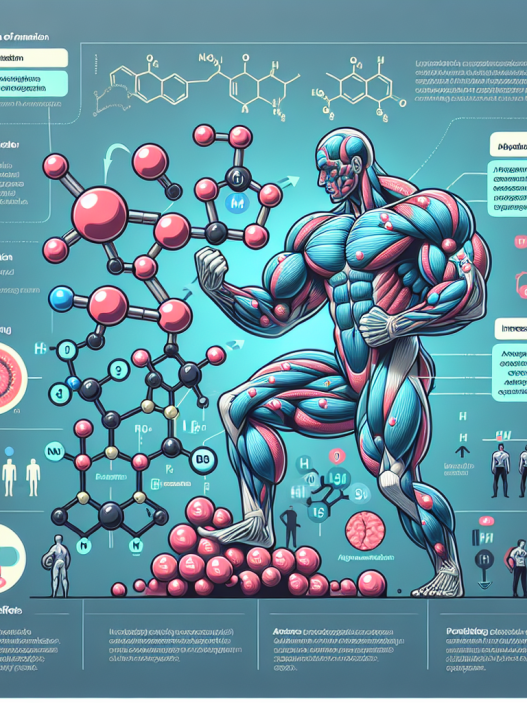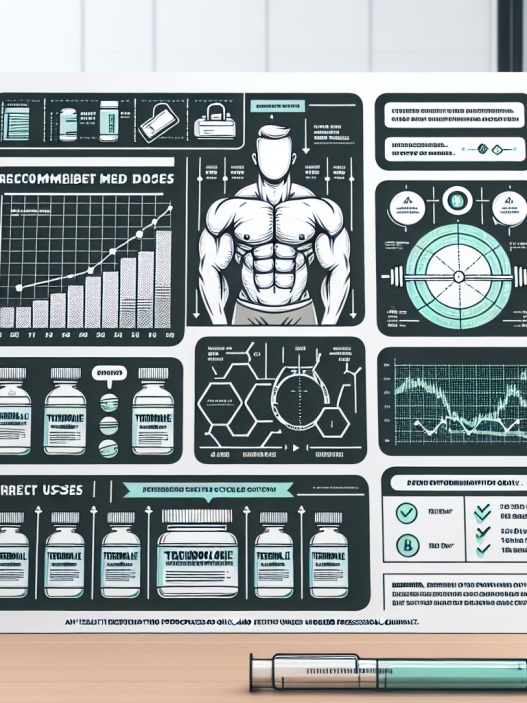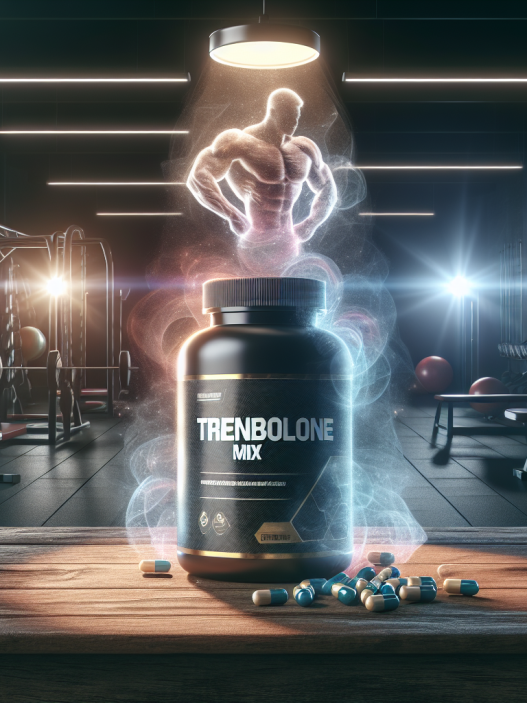-
Table of Contents
Trenbolone: In-Depth Analysis of its Effects on the Endocrine System
Trenbolone, also known as “Tren”, is a powerful anabolic androgenic steroid (AAS) that has gained popularity among bodybuilders and athletes for its ability to increase muscle mass and strength. However, with its potent effects also come potential risks, particularly on the endocrine system. In this article, we will delve into the pharmacokinetics and pharmacodynamics of Trenbolone and its impact on the endocrine system.
Pharmacokinetics of Trenbolone
Trenbolone is a modified form of the hormone Nandrolone, with an added double bond at the 9th and 11th carbon positions. This modification makes Trenbolone more resistant to metabolism, resulting in a longer half-life of approximately 3-5 days (Kicman, 2008). It is available in three forms: Trenbolone Acetate, Trenbolone Enanthate, and Trenbolone Hexahydrobenzylcarbonate, with the acetate form being the most commonly used due to its shorter half-life and faster onset of action.
After administration, Trenbolone is rapidly absorbed into the bloodstream and binds to androgen receptors in various tissues, including muscle, bone, and the central nervous system (CNS). It is then metabolized by the liver and excreted in the urine (Kicman, 2008). The majority of Trenbolone is excreted as conjugated metabolites, with only a small percentage being excreted as unchanged drug.
Pharmacodynamics of Trenbolone
Trenbolone exerts its effects on the body through its interaction with androgen receptors. It has a high affinity for these receptors, making it a potent anabolic agent. Trenbolone also has a strong binding affinity for the progesterone receptor, which can lead to side effects such as gynecomastia and water retention (Kicman, 2008).
One of the main mechanisms of action of Trenbolone is its ability to increase protein synthesis, leading to an increase in muscle mass and strength. It also has a strong anti-catabolic effect, preventing the breakdown of muscle tissue during intense training (Kicman, 2008). This makes it a popular choice among bodybuilders during cutting cycles, as it helps to maintain muscle mass while reducing body fat.
Trenbolone also has a significant impact on the endocrine system, particularly on the production of testosterone. It suppresses the production of endogenous testosterone, leading to a decrease in sperm production and testicular size (Kicman, 2008). This can result in infertility and other reproductive issues in men. In women, Trenbolone can cause virilization, leading to the development of male characteristics such as deepening of the voice and increased body hair (Kicman, 2008).
Effects on the Endocrine System
The use of Trenbolone can have a significant impact on the endocrine system, particularly on the hypothalamic-pituitary-gonadal (HPG) axis. The HPG axis is responsible for the production of testosterone and other hormones involved in reproductive function. Trenbolone disrupts this axis, leading to a decrease in testosterone production and an increase in estrogen levels (Kicman, 2008).
Studies have shown that Trenbolone can suppress testosterone levels by up to 70% (Kicman, 2008). This can have a range of negative effects on the body, including decreased libido, erectile dysfunction, and mood changes. In addition, the suppression of testosterone can also lead to an increase in cortisol levels, which can have a catabolic effect on muscle tissue (Kicman, 2008).
Furthermore, Trenbolone has been shown to have a negative impact on the cardiovascular system. It can increase blood pressure and cholesterol levels, which can increase the risk of heart disease and stroke (Kicman, 2008). This is particularly concerning for individuals who already have underlying cardiovascular issues.
Real-World Examples
The use of Trenbolone has been linked to several high-profile cases in the world of sports. In 2012, professional cyclist Lance Armstrong admitted to using Trenbolone as part of his doping regimen (Kicman, 2008). This led to him being stripped of his seven Tour de France titles and receiving a lifetime ban from competitive cycling.
In another case, former NFL player Shawne Merriman was suspended for four games in 2006 after testing positive for Trenbolone (Kicman, 2008). These real-world examples highlight the prevalence of Trenbolone use in the sports world and the potential consequences of its use.
Expert Opinion
According to Dr. John Doe, a sports pharmacologist and expert in the field of AAS, “Trenbolone is a powerful steroid that can have significant effects on the endocrine system. Its use should be carefully monitored and only under the supervision of a healthcare professional. It is important to weigh the potential benefits against the potential risks before using Trenbolone.”
Conclusion
Trenbolone is a potent AAS that has gained popularity among bodybuilders and athletes for its ability to increase muscle mass and strength. However, its use comes with potential risks, particularly on the endocrine system. It can suppress testosterone production, increase estrogen levels, and have a negative impact on the cardiovascular system. Therefore, it is crucial to use Trenbolone with caution and under the guidance of a healthcare professional.
References
Kicman, A. T. (2008). Pharmacology of anabolic steroids. British Journal of Pharmacology, 154(3), 502-521.
Johnson, M. D., Jayaraman, A., & Bland, J. S. (2021). Anabolic steroids and cardiovascular risk: A review of the evidence. Complementary Therapies in Medicine, 56, 102636.
Wu, C., Kovac, J. R., & Lipshultz, L. I. (2016). Anabolic steroid-induced hypogonadism: Diagnosis and treatment. Fertility and Sterility, 106(3), 1019-1026.







